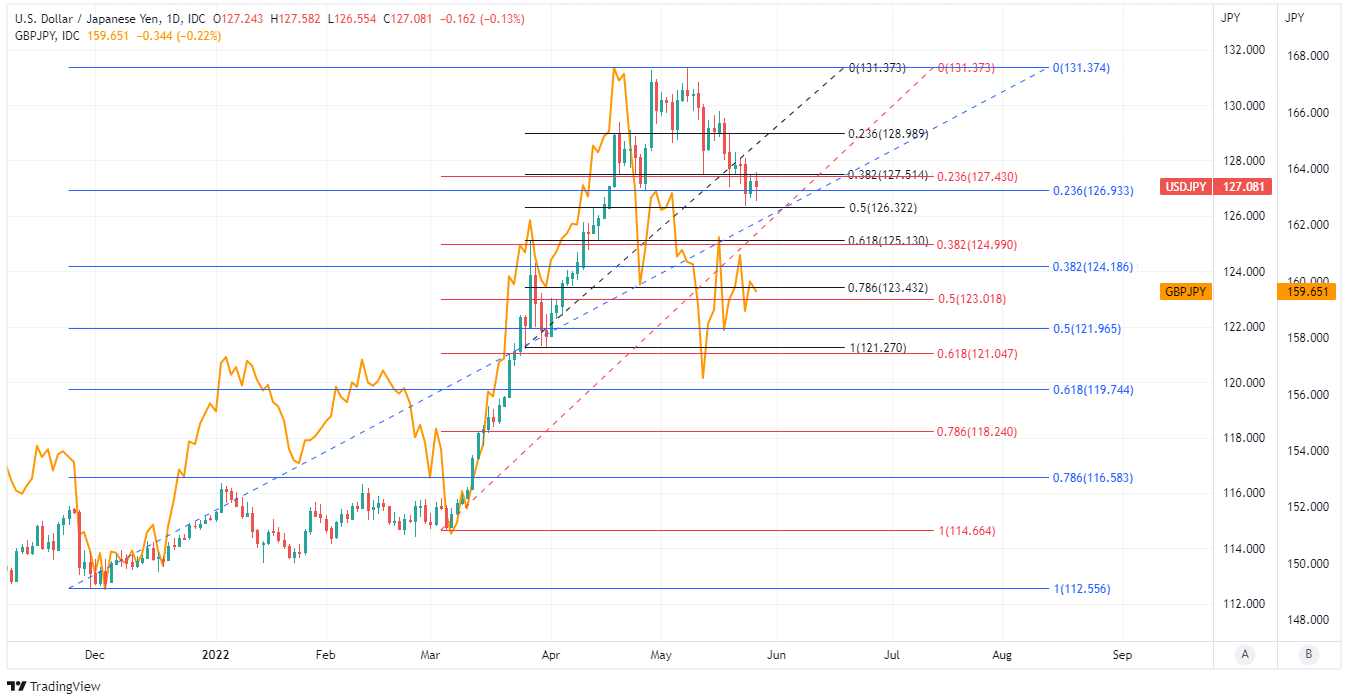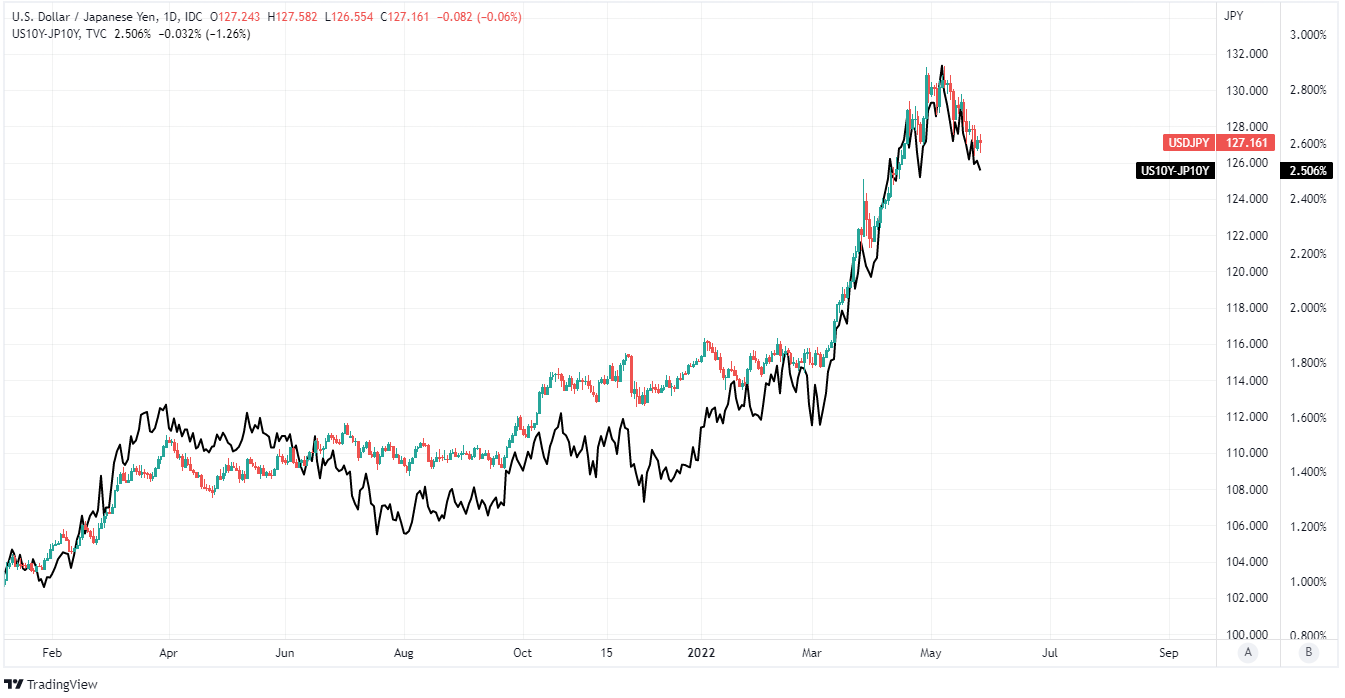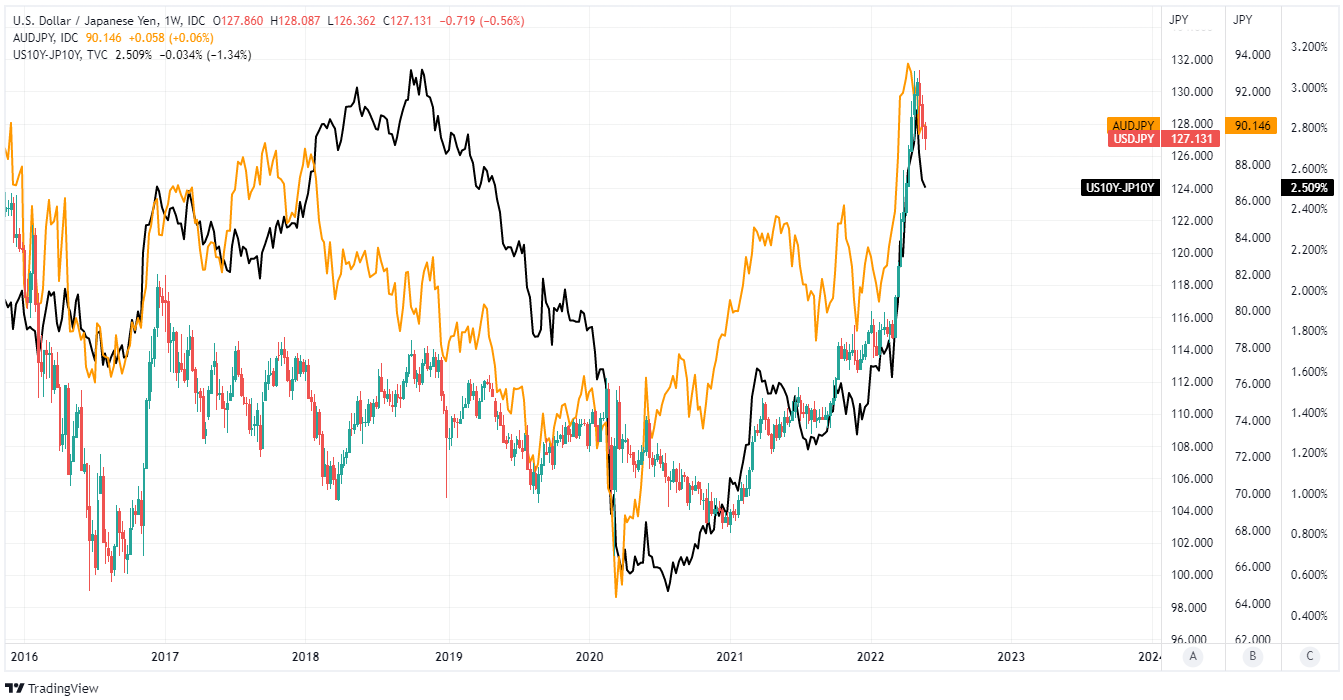Japanese Yen’s Brightening Outlook Burdens USD/JPY, GBP/JPY and Others
- Written by: James Skinner
-
- Emerging consensus suggests USD/JPY has peaked
- Faltering risk appetites & economies catch JPY short
- Could keep GBP/JPY, AUD/JPY et al on back on foot

Image © Leonid Andronov, Adobe Stock
The Yen reached one month highs against the Dollar this week but a brightening outlook for the Japanese economy and currency could see it imposing a further burden on USD/JPY, GBP/JPY and others during the weeks and months ahead.
Japan’s currency was trading close to its strongest level against the U.S. Dollar since the middle of April Thursday as it reclaimed further ground previously ceded to Pound Sterling and other currencies during what was a turbulent start to the year for the Yen.
Both domestic and international factors have helped pick the Japanese currency up off the floor while pushing GBP/JPY lower by more than five percent from its April highs, although there is an emerging consensus among analysts suggesting the Yen’s recovery could still have further to run.
“JPY is the top performing currency following comments by BoJ Governor Kuroda about an eventual exit from monetary easing,” says Elias Haddad, a senior currency strategist at Commonwealth Bank of Australia.
 Above: USD/JPY at daily intervals alongside GBP/JPY and with Fibonnaci retracements of various extended rallies indicating prospective areas of technical support for the Dollar and resistance for the Yen. Click image for more detailed inspection.
Above: USD/JPY at daily intervals alongside GBP/JPY and with Fibonnaci retracements of various extended rallies indicating prospective areas of technical support for the Dollar and resistance for the Yen. Click image for more detailed inspection.
The Yen received a further boost on Wednesday after Bank of Japan (BoJ) Governor Haruhiko Kuroda was reported to have referred in parliament to an eventual winding down of the bank’s longrunning monetary stimulus programmes as if this could soon feature in the BoJ’s policy agenda.
"In our view, Kuroda’s remarks do not imply an imminent shift in Japanese monetary policy. Still‑low long run inflation expectations among Japanese consumers and businesses suggest the recent rise in inflation will unlikely be sustained," says Kristina Clifton, a strategist and CBA colleague of Haddad.
Any eventual decision to reduce the levels of stimulus provided to the economy would almost without doubt be a seismic game-changer for the way in which financial markets perceive and value the Yen, although this emerging prospect is not the only source of support now aiding Japan’s currency.
This is because almost as notably for USD/JPY, U.S. government bond yields have begun to ebb from recent highs alongside economists’ expectations for both the U.S. and global economies, which could eventually have constraining implications for the Federal Reserve (Fed) interest rate outlook.
“In the crosses, the JPY moves tell us that USDJPY punching lower yesterday was only briefly about the JPY strengthening and more about the USD weakening,” says John Hardy, head of FX strategy at Saxo Bank, after suggesting on Wednesday that clients look for USd/JPY to slip to 125.
 Above: USD/JPY at daily intervals alongside spread or gap between 10-year U.S. and Japanese government bond yields. Click image for more detailed inspection.
Above: USD/JPY at daily intervals alongside spread or gap between 10-year U.S. and Japanese government bond yields. Click image for more detailed inspection.
The significant rally in U.S. government bond yields and resulting speculation in the currency market that drove USD/JPY higher in March and April has tightened financial conditions in the U.S. and elsewhere in the world while seemingly weighing heavily on the U.S. and global economies.
This is happening at a time when speculative traders in the currency market are widely believed to be heavily exposed to bets against the safe-haven Japanese Yen through bullish wagers on USD/JPY that could be forced into capitulation by myriad factors in the weeks and months ahead.
“We believe the factors that drove the Yen to deeply depressed levels are now changing, and that the currency therefore offers attractive asymmetry. Most importantly, there are signs that tighter US financial conditions have begun to bite, with more weakness in housing and manufacturing data over the last week, and a further rise in initial jobless claims,” says Zach Pandl, co-head of global foreign exchange strategy at Goldman Sachs.
“If US financial conditions have already tightened enough to generate a major slowdown, Fed officials may be content raising rates roughly in line with current forwards—and there would be a risk of fewer Fed rate hikes if the economy slows rapidly. Meanwhile, Japan itself should see improving growth over the coming quarters,” Pandl and colleagues wrote in a research briefing last Friday.
 Above: USD/JPY and AUD/JPY at weekly intervals with gap between 10-year U.S. and Japanese government bond yields. Click image for more detailed inspection.
Above: USD/JPY and AUD/JPY at weekly intervals with gap between 10-year U.S. and Japanese government bond yields. Click image for more detailed inspection.
Goldman Sachs recently cited a retreating coronavirus for a Japanese economic outlook that is improving just as other advanced economies begin to creak under the dual strains of inflation that has surged to multi-decade highs and tighter financial conditions resulting from central bank policy actions.
This diverging growth outlook is something that could further burnish the safe-haven appeal of the Japanese currency and even more so if the Bank of Japan responds to the anticipated economic recovery, and rising levels of inflation, by signalling that its monetary policy could change as a result.
That is in turn something that could reinforce the nascent fall in USD/JPY which is partly why Goldman Sachs tips the pair for a decline to 123 or below over next 12-months, although it could also have negative spillover implications for GBP/JPY and other currencies relative to the Japanese Yen too.
“Right now, the inertial momentum is towards risk-off. Luckily for us, extant positioning in FX is aligned as JPY shorts remain sizeable,” says Bipan Rai, North American head of FX strategy at CIBC Capital Markets.
“Layer in the risks of a negative growth print for China this quarter (which is also bearish AUD), and the fundamental backdrop supports being short AUD/JPY. The technicals look clean as well,” Rai said on Thursday after suggesting that CIBC clients look for a move down to 85.80 in AUD/JPY.






